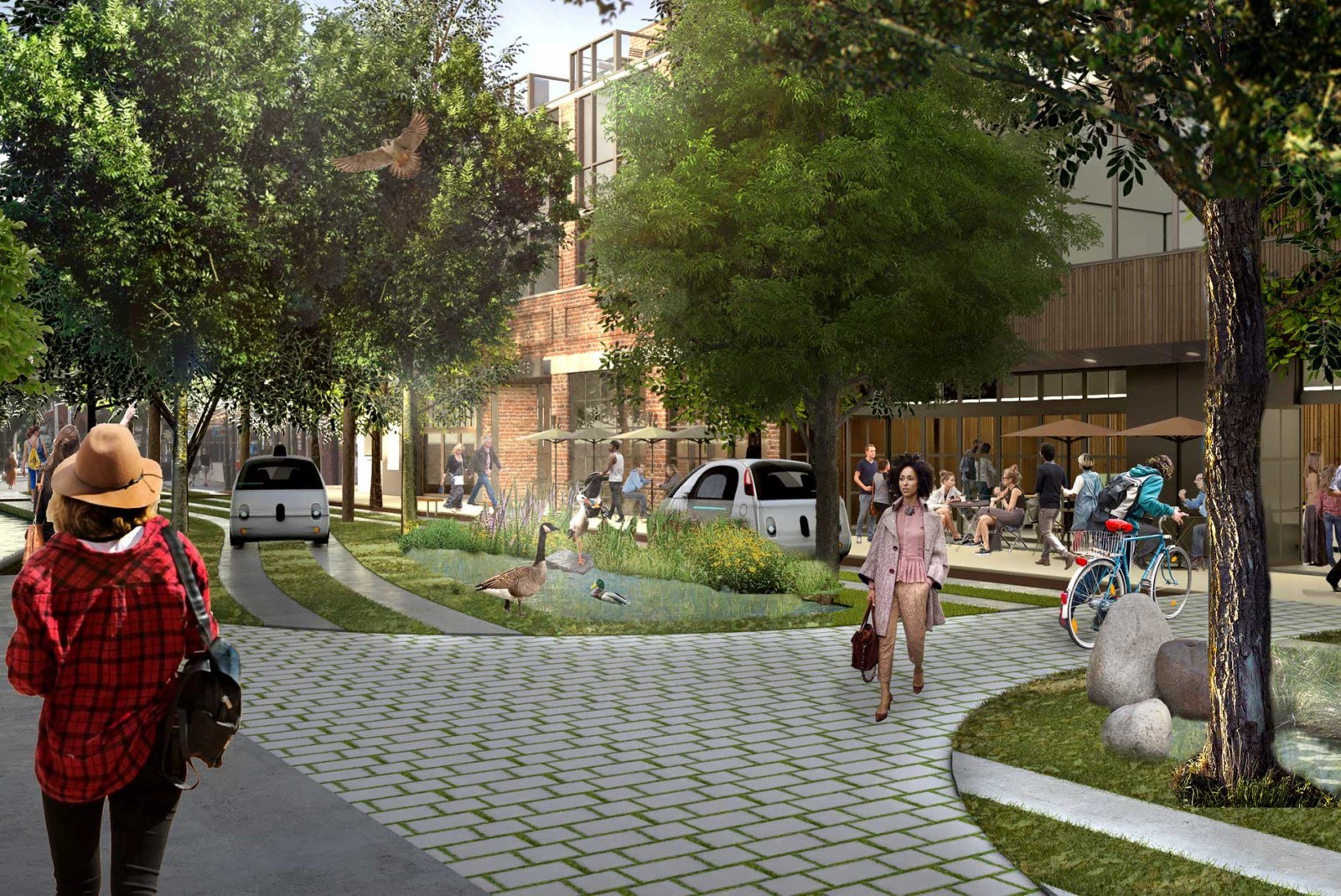From the impact on parking to the transformation of public transportation infrastructure, autonomous vehicles may forever change our cities.
HOK’s Director of Planning Brian Jencek recently discussed with Automotive World the impact of autonomous vehicles on our communities and the surprising role they may play in social equity.
Excerpted from Automotive World:
For all the enthusiasm that surrounds robotaxis and other urban applications for autonomous vehicles, their widespread deployment remains a long-term prospect. It is therefore no surprise that few if any U.S. cities have begun to prepare in earnest for their arrival.
What’s important to remember from the outset, says Timothy Chapin, the dean of Social Sciences and Policy at Florida State University, is that AVs have the potential to transform ownership models. Instead of owning cars, urbanites may instead own the right to call on a fleet vehicle. The question of whether people will own their vehicles or not will have large implications for infrastructure. “It’s not just about the technology itself,” he says.
Brian Jencek, director of Planning at HOK, agrees. “Companies such as Zoox are focused on transport as a service (TaaS) models via shuttles,” he says. “This has the potential to reduce congestion and improve access to mobility. The hope is that public and private partnerships will flourish to support municipal transport systems. If managed properly, AVs could improve social equity and lead us into a more just future.
“But then there’s the individually owned vehicle,” Jencek continues. “This is the most challenging use-case, because while it enables certain things, it brings with it severe consequences.” Ride-hailing services such as Uber and Lyft have previously admitted that their services have become part of the problem in some cities. Once a trip is complete, drivers will stay on the road to wait for a new fare. But as Jencek explains, there is a second consideration for planners. If a privately owned or single-occupancy AV can carry a commuter to work—leaving them free to rest, work or enjoy connected services—it creates the risk of much greater urban sprawl, as long, stressful commutes are no longer such a negative factor when a person decides where to live.
“The idea of TaaS is to reduce congestion and densify cities,” says Jencek. “Private AVs fall on the other end of the spectrum, promoting further expansion into rural areas. This is not good because it is dense city environments that are most likely to deliver socially equitable services, which can be shared across different income capacities. When we induce sprawl, these services become exclusive.”
“In the future, these fleets will need somewhere to go,” says Jencek. Along with staying off the road, vehicles will also require a place to charge. “We could think about these structures as hives, or nodes. We know that TaaS AVs will need to be distributed throughout a city, and not concentrated in one place. It becomes a form of station, and cities will need to ask where they place these stations. One idea might be near existing transport structures, but then we’re building large car-parking structures in place of affordable housing or commercial space. And so this is something under discussion today, and one way in which we might see AVs influence future city design.”
When it comes to parking, AVs actually open up some interesting new possibilities, says Jencek. For a start, they no longer require space for drivers and occupants to open up their doors, meaning parking bays can be made smaller. Even more significant will be the benefits of smart-city technology, which can create efficiencies that aren’t obvious to human-drivers. “As humans, we will often wait for minutes at a time for someone to leave the closest parking space, rather than driving a little distance away and using another parking space. A computer will not wait, because its job is to park as quickly and efficiently as possible, and it has access to data which helps it to do this.”
If we scale that notion up, he adds, we get an idea of what is possible in smart cities driven by large amounts of data. The challenge will lie in making the data that tech giants hold freely available and compatible between the many different types of smart infrastructure, from garages to carparks.
